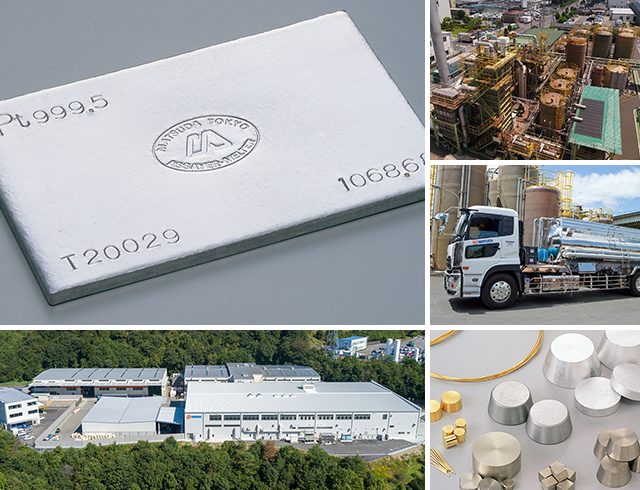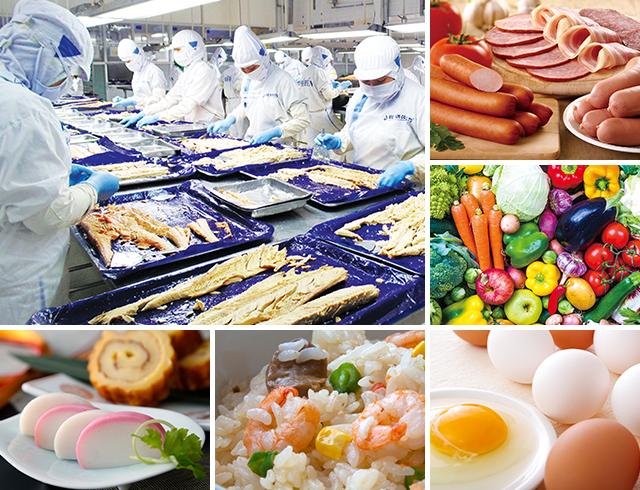At a meeting of the Board of Directors on May 13, 2022, Matsuda Sangyo approved its current medium-term management plan (fiscal 2022 to fiscal 2025). The Group’s consolidated targets for the plan’s final year, fiscal 2025 (ending March 31, 2026), are net sales of ¥300 billion, operating profit of ¥13 billion, an operating margin of 4.3%, return on equity (ROE) of 9.0%, and ordinary profit to total assets ratio of 10.0%.
Under the plan, Matsuda Sangyo aims to “be a company that continuously evolves and adapts to social changes, and which customers and society always need,” with the precious metals business segment and the food business segment positioned as the Group’s growth drivers. To realize this goal, the Group will work on a growth strategy founded on the basic policy of strengthening the revenue base and creating new revenue sources through continued proactive investment, strengthening the management base which supports and accelerates sustainable growth, and enhancing corporate value by promoting ESG management. In addition, through the effective use of resources and the securing of sustainable resources, the Group aims to provide high added value that contributes to resolving the problems faced by customers and society.
(Note) These performance targets are based on conditions in the operating environment as of the date of the Company’s earnings release on May 13, 2022. These targets may change due to a range of factors, including developments in the operating environment.
The following is an overview of the Group’s growth strategy.
Overview of growth strategy
Precious metals business segment
In the precious metals business segment, based on the vision of becoming a “leading company that creates resource circulation (utilization),” the Precious Metals Business Segment will differentiate itself by continuously providing customers with high environmental value through the enhancement of the comprehensive resource recycling capabilities, based on efforts to provide products and services that reduce environmental burden and to develop and sell high-performance electronic materials, among others. It will expand domestic market share and develop new markets overseas, as well as explore the electronic devices industry, alongside efforts to develop the chemicals/automotive industries and the rechargeable batteries/e-scrap markets.

Food business segment
In the food business segment, based on the vision of becoming the “best partner for customers in product development,” the Food Business Segment will strengthen its core business (sale of ingredients) by expanding its procurement network for the raw materials for food products as well as its product lineup, and at the same time, work on building sales channels and developing safe, secure and sustainable products that capture the needs of customers, as well as expand sales domains by accelerating global roll-out.

|
Strengthening management foundation
With a view to strengthening management foundation, which is necessary to support sustainable growth and enhance corporate value, the Matsuda Sangyo Group will advance concrete measures based on the recognition of six issues: improving productivity, promoting DX, producing management talents, the leveraging diverse human resources, enhancing the workplace environment, and strengthening governance and risk management.
Investment plan
The Matsuda Sangyo Group will proactively advance its plan to invest a total of 30 billion yen over four years, allocating management resources for sustainable growth by strengthening its revenue base, developing new businesses, and strengthening its management foundation, while giving consideration to striking a balance between securing sound financial health and providing returns to shareholders.
ESG initiatives
Based on the corporate philosophy of “making effective use of the limited earth resources and contributing to society through business,” the Matsuda Sangyo Group, is contributing to society through the expansion of both the Precious Metals and Food Business Segments. To realize a sustainable society while achieving business growth for the corporate group, it has positioned the following as important issues and will develop and advance concrete measures in these areas: striking a balance between reducing environmental burden and business growth, enhancing customer satisfaction and securing the trust of society, and accelerating growth through the activities of diverse human resources.
Returns to shareholders
With consideration for the balance with maintaining internal reserves for growth investment, the Matsuda Sangyo Group will has established the basic policies of distributing stable and sustainable dividends, enhancing corporate value through the flexible acquisition of its own shares with consideration for the market environment, and meeting the expectations of its shareholders. Dividends will be guided by a ratio of dividends to shareholders’ equity of 1.5% or more.
For details, please refer to the Notice of Formulation of Medium-term Management Plan (FY2022–2025).


